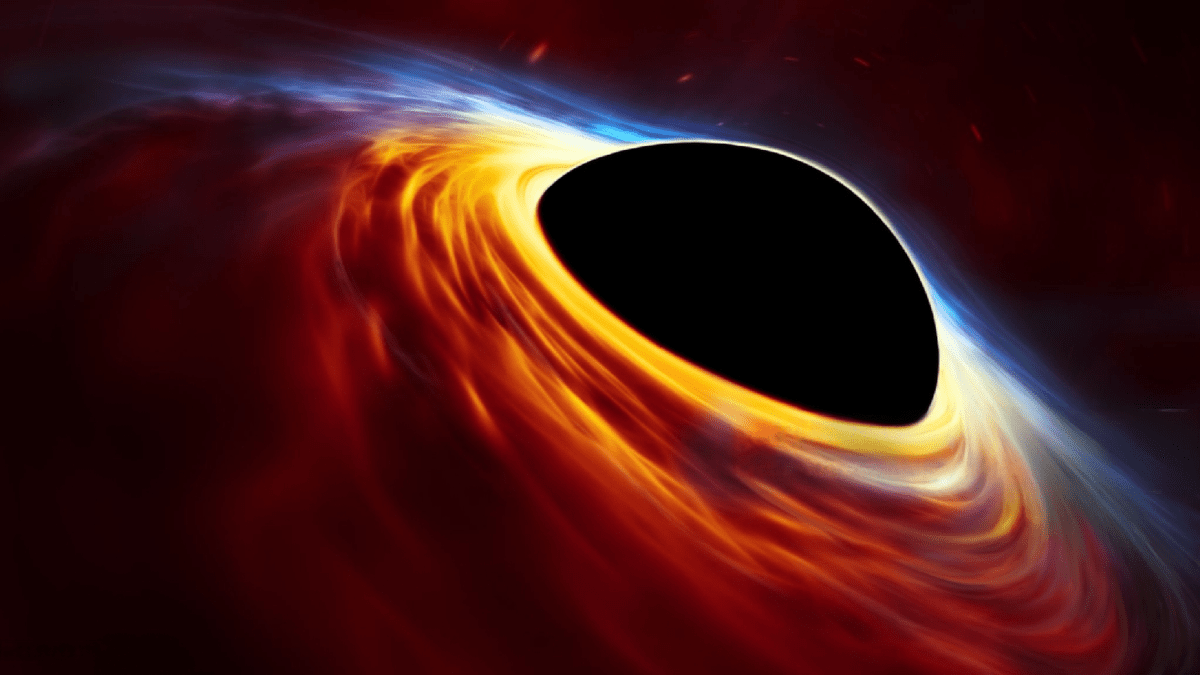credit: Getty Images.
Closest Black Hole to Earth: An Introduction:
In our celestial backyard, a recent breakthrough in astrophysics has illuminated the possibility of the closest black holes to Earth, revealed in a comprehensive study led by Stefano Torniamenti, a postdoctoral researcher from the University of Padua. Their groundbreaking findings, published in the Monthly Notices of the Royal Astronomical Society, suggest the presence of several black holes within the Hyades cluster. This starry neighborhood sits tantalizingly close to our solar system.
Unveiling Cosmic Mysteries:
Black holes have captivated the imagination of scientists and stargazers alike for generations. These cosmic enigmas, particularly the smaller ones, have come into sharper focus since the historic detection of gravitational waves in 2015. These ripples in spacetime, caused by cataclysmic events like the collision of low-mass black hole pairs, have provided unprecedented insights into the dark, invisible world of black holes.
Probing for the Closest Black Hole to Earth in the Hyades Cluster:
The Hyades cluster, residing a mere 150 light-years away from our Sun, has long been a subject of scientific intrigue. It offers a unique opportunity to peer into the cosmic cradle of stars, and now, potentially, black holes. To investigate this intriguing possibility, the research team employed advanced simulations to meticulously track the motion and evolution of all stars within the Hyades cluster. These simulations were then rigorously compared with real-world data gathered by the European Space Agency’s Gaia satellite.
The Astonishing Discovery:
The most astonishing revelation from this study is the potential existence of two or three black holes within the Hyades cluster, making them possibly the closest black holes to Earth ever detected. Even simulations accounting for the ejection of black holes less than 150 million years ago provided compelling matches with observational data.
Significance of the Discovery:
The presence of black holes within or near the Hyades cluster carries profound implications for our understanding of celestial mechanics. Black holes, with their formidable gravitational influence, can orchestrate dynamic processes within star clusters, such as mass segregation, where more massive stars congregate towards the cluster’s core. Moreover, these newfound black holes significantly raise the likelihood of gravitational wave-generating mergers occurring in our cosmic neighborhood.
Mapping the Black Hole Landscape:
This discovery not only enhances our comprehension of star cluster evolution but also contributes to the ongoing quest to map the distribution of black holes across the Milky Way galaxy. While supermassive black holes usually anchor galactic centers, the whereabouts of stellar-mass black holes have remained more elusive. The revelation within the Hyades cluster provides a critical piece of this cosmic puzzle.
In summary, the search for the closest black hole to Earth in the Hyades Cluster:
The recent revelation of potential black holes within the Hyades cluster marks a significant stride in our quest to unravel the mysteries of the universe. This newfound proximity of black holes to our solar system opens up exciting avenues for further research and exploration. Beyond expanding our knowledge of star cluster dynamics and gravitational wave sources, these findings underscore the ubiquity and enigmatic nature of black holes, reminding us that cosmic wonders may be closer than we ever imagined.
